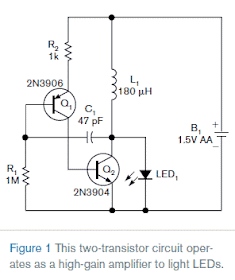
Figure 1. This simple astable multivibrator provides a low-cost way to drive an LED from a single cell.
The 1-MΩ resistor supplies bias current. The 1-kΩ resistor helps linearize the oscillator waveform into one that is close to a square wave with about a 50-to-50 duty cycle. The capacitor supplies positive feedback from the output of the amplifier to the noninverting input. The frequency of oscillation depends mostly on the RC constant of the feedback capacitor and the input-stage impedance. The circuit oscillates at 91 kHz with a 48% duty cycle. You can use almost any common NPN or PNP transistors, as long as they have moderate forward-current gain of 50 or more and can handle 100-mA collector currents.
The LED connects across the output transistor because this approach lets the inductive kickback voltage add to the battery-supply voltage and makes the LED brighter. This circuit operates well from approximately 0.8 to 1.6 V, which is the useful range of an alkaline battery. The LED-light output decreases as the supply voltage decreases from 1.6 to 0.8 V.
Reference
1. Bruno, Luca, “Astable multivibrator lights LED from a single cell,” EDN, Aug 21, 2008, pg 53.
No comments:
Post a Comment